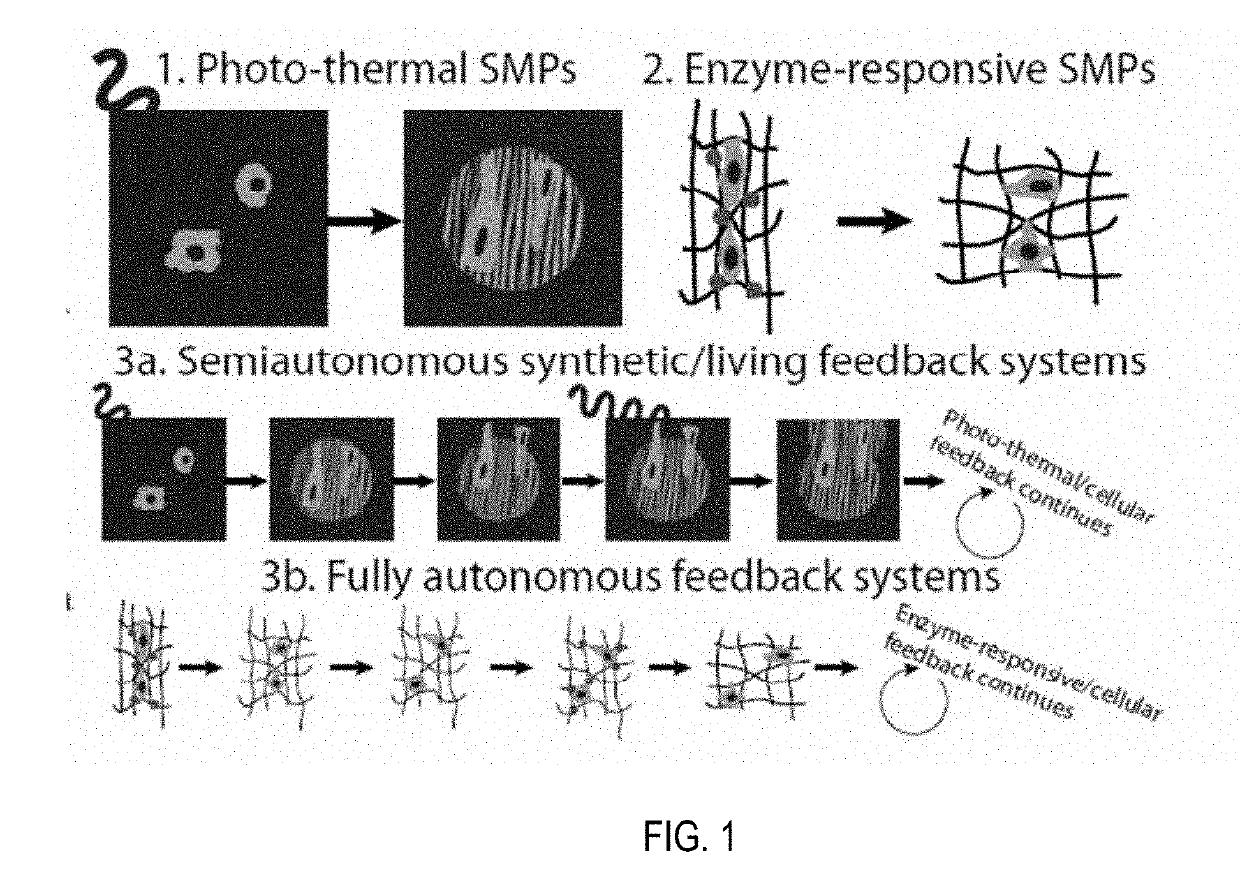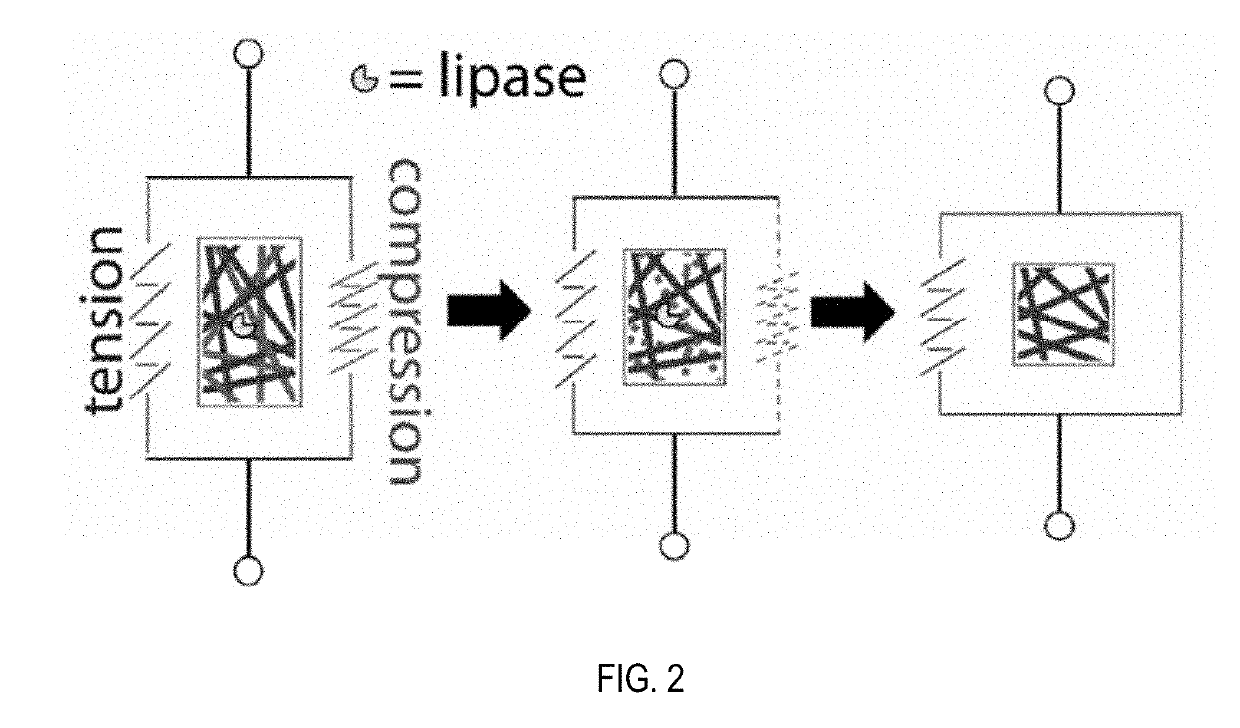Enzyme-responsive shape memory polymers
- Summary
- Abstract
- Description
- Claims
- Application Information
AI Technical Summary
Benefits of technology
Problems solved by technology
Method used
Image
Examples
example
[0039]To achieve the present invention, an enzymatically degradable material, poly(ε-caprolactone) (PCL), may be combined with an elastomeric non-degradable material, PELLETHANE® (an aromatic polyether-based thermoplastic polyurethane available from Lubrizol Advanced Materials of Cleveland Ohio). In this example, PCL acts as a shape fixer to hold the temporary shape while the PELLETHANE® provides the memory component or the force to return to the original shape. Upon exposure to lipase, the PCL degrades, allowing the PELLETHANE® to return to its original configuration.
[0040]Materials
[0041]PCL, lipase derived from Pseudomonas cepacian, and dimethyl formide (DMF) were obtained from Sigma Aldrich. Chloroform and tetrahydrofuran (THF) were purchased from Fisher Scientific, and PELLETHANE® was purchased from Lubrizol. PCL electrospinning solutions were prepared by dissolving 2 g of PCL in 10 mL of an 8:2 volume ratio solution of chloroform and DMF. PELLETHANE® electrospinning solutions w...
example 2
[0050]To develop an SMP that responds directly to enzymatic activity and can do so under cell culture conditions, an SMP that combines an enzymatically labile fixing component, poly(ε-caprolactone) (PCL), with an enzymatically stable elastomer, PELLETHANE® 5863-80A (hereafter, “PELLETHANE®”; a polyether-based thermoplastic polyurethane elastomer), was fabricated and characterized, as seen in FIG. 5. Fiber composites composed of poly(e-caprolactone) (PCL) (red) and PELLETHANE® (black) are heated and stretched above the Tm of PCL to program the samples. The composites are then cooled to fix the temporary shape, putting the PELLETHANE® in an entropically unfavorable state. In this state, the PELLETHANE® applies a compressive force to the PCL, as the PELLETHANE® tries to recover back to its original shape but is resisted by the PCL crystallites that hold the temporary shape. Exposure to the enzyme lipase degrades the PCL portion of the fiber composite. As the PCL degrades, the force res...
PUM
| Property | Measurement | Unit |
|---|---|---|
| Fraction | aaaaa | aaaaa |
| Fraction | aaaaa | aaaaa |
| Current | aaaaa | aaaaa |
Abstract
Description
Claims
Application Information
 Login to View More
Login to View More - R&D
- Intellectual Property
- Life Sciences
- Materials
- Tech Scout
- Unparalleled Data Quality
- Higher Quality Content
- 60% Fewer Hallucinations
Browse by: Latest US Patents, China's latest patents, Technical Efficacy Thesaurus, Application Domain, Technology Topic, Popular Technical Reports.
© 2025 PatSnap. All rights reserved.Legal|Privacy policy|Modern Slavery Act Transparency Statement|Sitemap|About US| Contact US: help@patsnap.com



